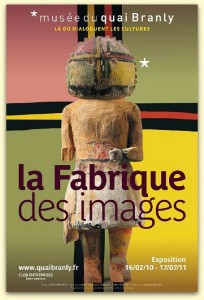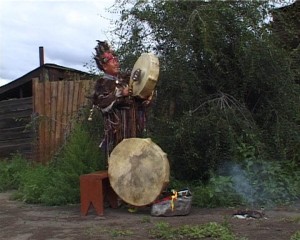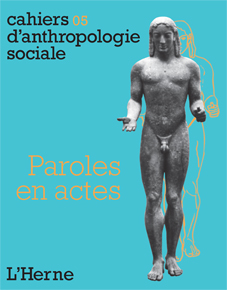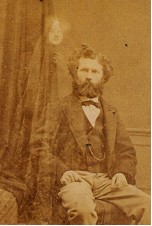William Hanks, Professeur à l’Université de Californie, Berkeley, interviendra les 23 et 30 Mai et le 6 Juin (Salle 2, Musée du Quai Branly).
Le thème qu’il a choisi est : Coprésence et intersubjectivité rituelle
Voici le programme des séances:
Séance 1. La Place de l’objet dans le rapport intersubjectif
(23 Mai, 14h, Salle 2, Musée du Quai Branly)
Dans sa phénoménologie des rapports intersubjectifs, Alfred Schutz a établi une série de principes, dont la réciprocité des perspectives, la convergence (dovetailing) des motivations, la co-présence vécue des sujets, et le “stock of knowledge,” qui consiste en connaissance et savoir acquis. Ces principes servent à distinguer plusieurs éléments de la parole rituelle, mais ne sont pas suffisants. D’une part, le traitement du corps dans les écrits de Schutz est trop limité, et d’autre part les objets jouent un rôle plus important dans l’intersubjectivité que ce qu’il a prévu. Pour le corps, c’est plutôt Merleau Ponty qui a établi les bases d’une analyse adéquate. Dès qu’on prend en compte l’objet, il faut concevoir le rapport intersubjectif non pas en deux termes (Sujet - Sujet) sinon à trois termes (sujet - Objet - Sujet). Je propose qu’au cours des pratiques rituelles chamaniques, les objets rituels jouent un rôle fondamental dans la production de l’intersubjectivité entre le chamane, ses esprits familiers et le client.
Séance 2. Regards sur les objets rituels
(30 Mai, 14h, Salle 2, Musée du Quai Branly)
Une fois introduit comme élément d’intersubjectivité, l’objet vient jouer un rôle crucial dans le champ rituel. Sur l’autel chamanique maya se trouvent plusieurs sortes d’objets dont les plus importants sont les santos “saints”, [images, statues] et les saástun ‘cristaux divinatoires.’ Ces objets incorporent la sédimentation de l’histoire de leur propre production comme de leur usage, et ils attirent à l’autel les esprits-dieux qu’ils représentent. Nous allons explorer ces objets en détail dans le contexte de leur fonctions dynamiques dans le rite et dans l’interaction entre les participants qui y sont impliqués.
Séance 3. L’énonciation rituelle maya
(6 Juin, 14h, Salle 2, Musée du Quai Branly)
La parole rituelle est au coeur du rite, et c’est elle qui met en mouvement les objets et les processus interactifs qui les impliquent. En Maya la parole et le chant chamaniques se réalisent dans un registre particulier qui implique l’indexation des qualités et du pouvoir d’attirance des santos et des crystaux. C’est en priant que le chamane les rend actifs, faute de quoi les crystaux restent inertes. A la fois expression du chamane et parole des esprits, le parler rituel effectue des transformations du sujet chamanique, des esprits auxquels il s’adresse et du patient qu’il soigne.


 Workshop, University of Austin, October 2010, 14th-16th.
Workshop, University of Austin, October 2010, 14th-16th. L’équipe ANR “Art • Rituel • Mémoire” vous invite à un débat autour de l’exposition La Fabrique des images (musée du quai Branly)
L’équipe ANR “Art • Rituel • Mémoire” vous invite à un débat autour de l’exposition La Fabrique des images (musée du quai Branly) Dans le cadre du séminaire “Anthropologie de la mémoire” de Carlo Severi,
Dans le cadre du séminaire “Anthropologie de la mémoire” de Carlo Severi, Dans le cadre du séminaire “Anthropologie de la mémoire” de Carlo Severi,
Dans le cadre du séminaire “Anthropologie de la mémoire” de Carlo Severi,
 Nous sommes heureux de vous annoncer la parution de Paroles en actes
Nous sommes heureux de vous annoncer la parution de Paroles en actes En collaboration avec l’Université de Cambridge et le projet ANR “Anthropologie de l’art: création, rituel, mémoire”, se tiendra les mercredi 16, jeudi 17 et vendredi 18 décembre à Cambridge un colloque intitulé:
En collaboration avec l’Université de Cambridge et le projet ANR “Anthropologie de l’art: création, rituel, mémoire”, se tiendra les mercredi 16, jeudi 17 et vendredi 18 décembre à Cambridge un colloque intitulé: